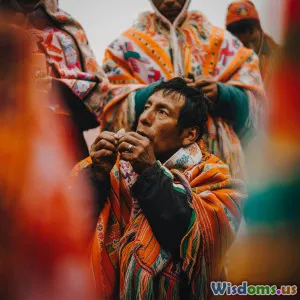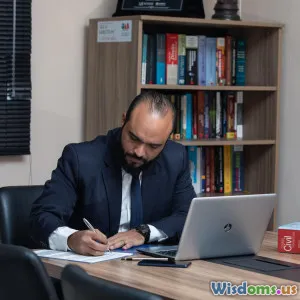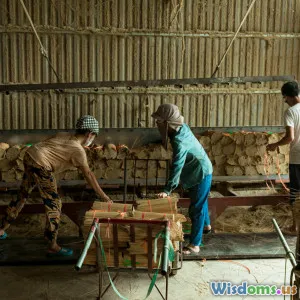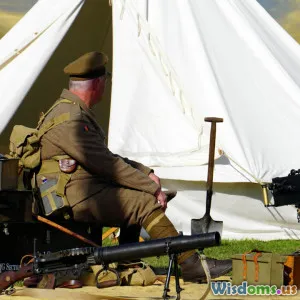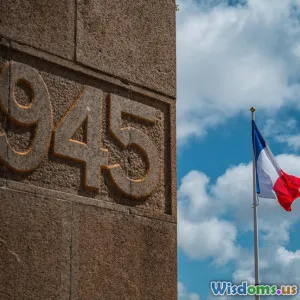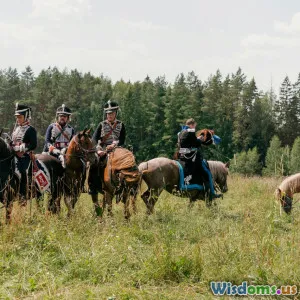
Top Five Documented Rituals Still Practiced by Secret Societies
9 min read Explore the top five rituals secret societies still perform, unveiling traditions shrouded in mystery and history. (0 Reviews)
Top Five Documented Rituals Still Practiced by Secret Societies
Secret societies have long been the subject of intrigue, speculation, and sometimes fear. Wrapped in layers of mystery, their rituals and modes of operation remain under the veil of secrecy. These societies, ranging from ancient fraternal orders to modern-day groups, continue to perform rituals that symbolize their values, history, and exclusivity. In this article, we explore the top five documented rituals still practiced by secret societies, revealing their origins, significance, and how they persist in the modern age.
Introduction
Despite the digital age's transparency, secret societies thrive on discretion and tradition. Their rituals, often veiled in symbolic language and acts, are key elements that bind members together and differentiate them from the outside world. These ceremonies can involve initiation, oaths, symbolic gestures, or secret knowledge passed through generations. Such practices have fascinated historians, conspiracy theorists, and the curious alike.
Understanding these rituals helps us appreciate the social, psychological, and cultural components secret societies embody. Many of these traditions date back centuries and could be considered living artifacts of human social evolution.
1. The Masonic Initiation Ritual
Overview
Freemasonry is arguably the most well-known secret society globally, with roots stretching back to the medieval stonemason guilds. Central to Freemasonry is its initiation ritual, a complex ceremony designed to symbolize moral and spiritual growth.
Description and Significance
Initiates, or 'Entered Apprentices,' undergo a carefully choreographed ritual filled with symbolic items such as aprons, the working tools of masonry, and allegorical storytelling about building a perfect temple. This initiation includes oaths of secrecy and moral conduct, binding the new member to the fraternity's values.
This ritual is significant because it serves as a transformative experience designed to impress the importance of ethical behavior, self-improvement, and fraternity. It's been documented in detailed Freemason manuals dating back to the early 18th century.
Example
Historical records show that in 1723, the 'Constitutions of the Free-Masons' laid the foundation for these rituals. Today, many lodges worldwide conduct a nearly identical ceremony, proving its lasting importance.
2. The Skull and Bones Tap Ceremony
Overview
The Skull and Bones society, founded in 1832 at Yale University, is infamous for its secrecy and elite membership. One of its central rituals is the 'Tap Ceremony,' where prospective members are selected.
Description and Significance
During the Tap Ceremony, 15 juniors are ‘tapped’ on the shoulder in a discreet process acknowledging their invite to join. It symbolizes selection for an exclusive brotherhood that shapes members’ trajectories through lifelong connections.
The ceremony embodies themes of loyalty, secrecy, and honor, instilling a powerful sense of belonging and responsibility.
Example
Despite being shrouded in secrecy, several former members, including prominent politicians and leaders, have discussed the profound personal impact this ritual had on them. For example, former U.S. Presidents George H.W. Bush and George W. Bush were both members, reputedly shaped by these early experiences.
3. The Odd Fellows’ Obligation and Symbolism
Overview
The Independent Order of Odd Fellows (IOOF) is a philanthropic secret society established in the 18th century. Their rituals focus on morality, friendship, and charity.
Description and Significance
New members are required to take an obligation—a solemn vow to uphold friendship, love, and truth. The ritual involves light symbolism, including the emblematic three-link chain representing these three core values.
Held within a lodge, the ceremony emphasizes community support and self-improvement through symbolic storytelling.
Example
Historical records indicate Odd Fellows played significant roles in community building and even in founding hospitals, showcasing how their ritualistic values translated into societal contribution.
4. The Rosicrucian Initiation
Overview
The Rosicrucian Order, dating back to early 17th-century Europe, blends mysticism, philosophy, and esoteric knowledge. Their initiation ritual is an elaborate spiritual journey.
Description and Significance
Initiates undergo symbolic death and rebirth sequences representing transformation and enlightenment. These ceremonies include meditation, symbolic acts of purification, and imparting secret teachings on nature, science, and spirituality.
Such rites aim to align personal growth with universal truths, which inspired later New Age and occult movements.
Example
The 1614 publication of the Fama Fraternitatis outlined initial Rosicrucian philosophies and hinted at the secret rituals, influencing intellectual movements and secretive societies globally.
5. The Order of the Eastern Star Rituals
Overview
Founded in the mid-19th century, the Order of the Eastern Star is an appendant body of Freemasonry open to both men and women. Its rituals focus on biblical stories embodying virtues like fidelity, loyalty, and strength.
Description and Significance
The ritualistic work involves degrees named after biblical figures such as Adah and Ruth, each teaching morals through enactments, symbols, and lectures. The ceremonies reinforce virtue through allegory and foster bonds across gender lines.
The order’s inclusiveness and moral instruction make its rituals a living tradition sustaining a broad social network.
Example
Today, the Order of the Eastern Star remains active worldwide, holding annual conventions where these well-documented rituals are performed with reverence.
Conclusion
Secret societies have endured for centuries, not merely surviving but thriving through the power of ritual. These ceremonies, from initiation to oaths and symbolic gestures, serve as cornerstones for identity, ethical guidance, and connection. The documented rituals practiced by groups like the Freemasons, Skull and Bones, Odd Fellows, Rosicrucians, and the Order of the Eastern Star offer fascinating insights into how tradition and symbolism continue to shape human social structures.
Understanding these rituals opens a window into the cultural and psychological systems secret societies operate within. Their endurance reminds us how ritual remains a vital, universal element of human experience—combining mystery, meaning, and community in ways that transcend time.
Whether you view these practices with suspicion or admiration, their impact on culture and history is undeniable, inviting continued curiosity and study.
References & Further Reading:
- Masonic Rituals and Their Symbolism – The Freemasons' Official Guide 1723 Edition
- Secret Societies at Yale by Alex C. Jones (2015)
- Independent Order of Odd Fellows Historical Archives
- Fama Fraternitatis translated and annotated version, 1614
- Order of the Eastern Star Ritual Handbooks (Classic Editions)
Rate the Post
User Reviews
Popular Posts











